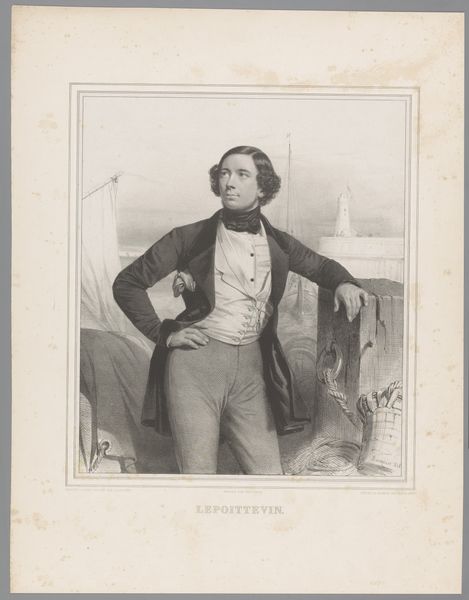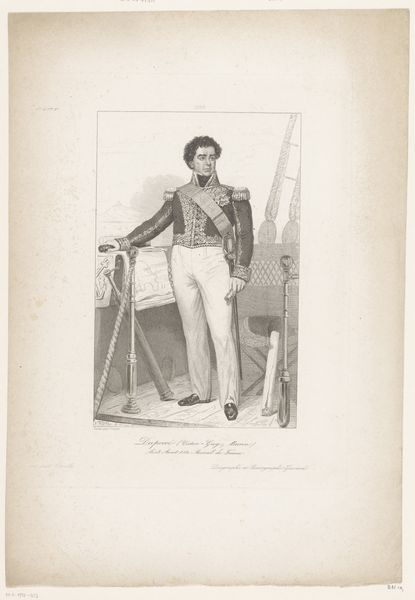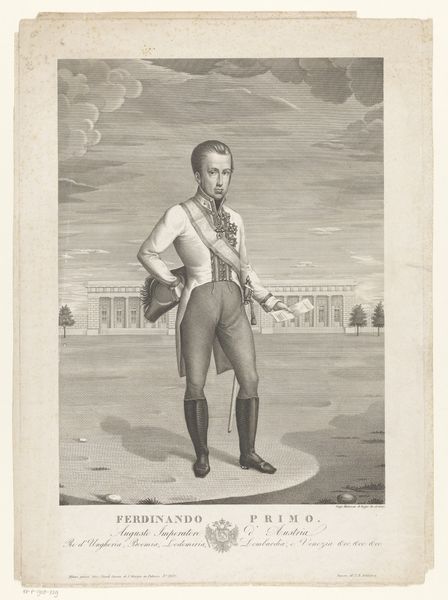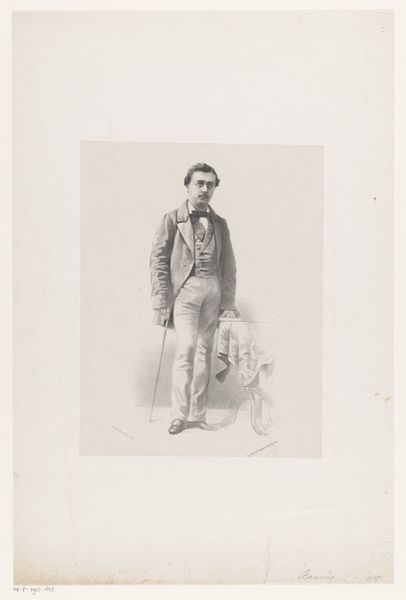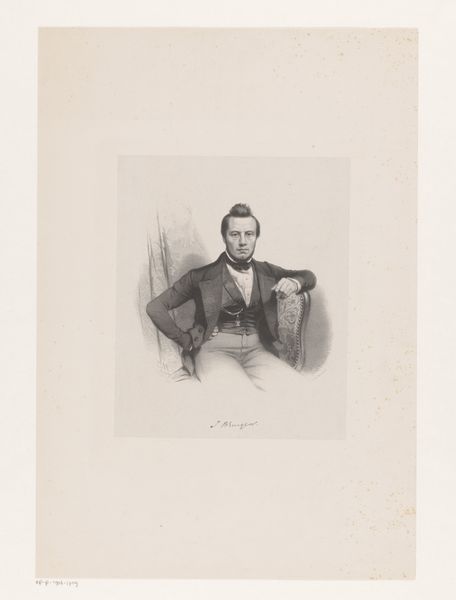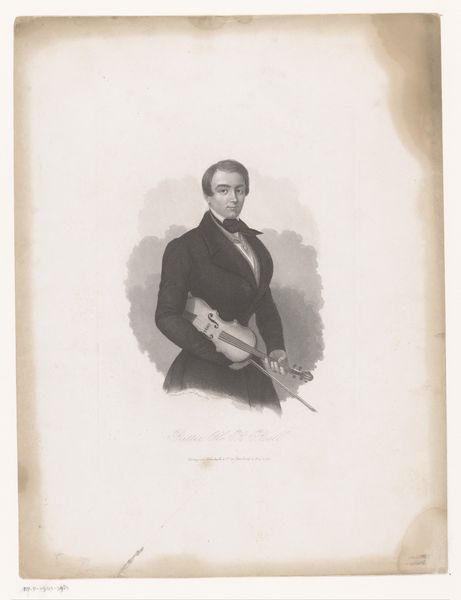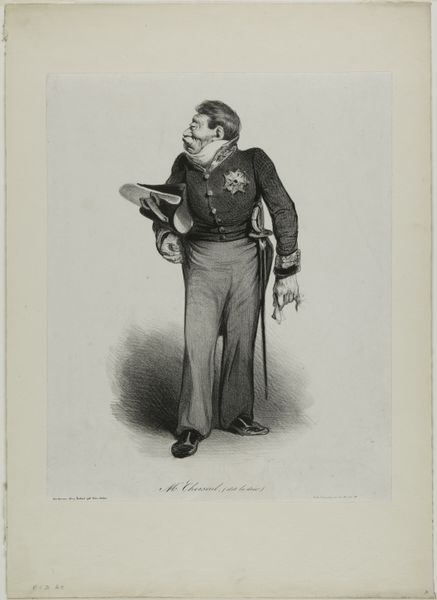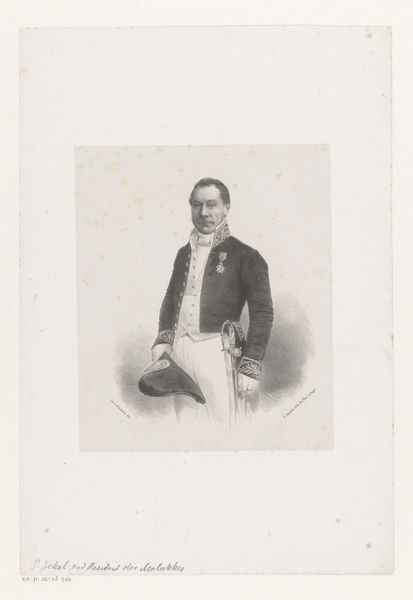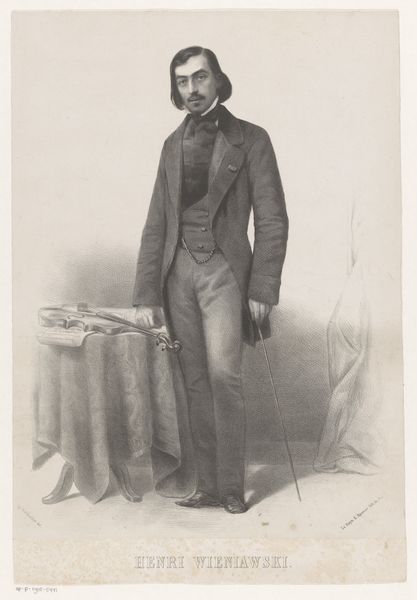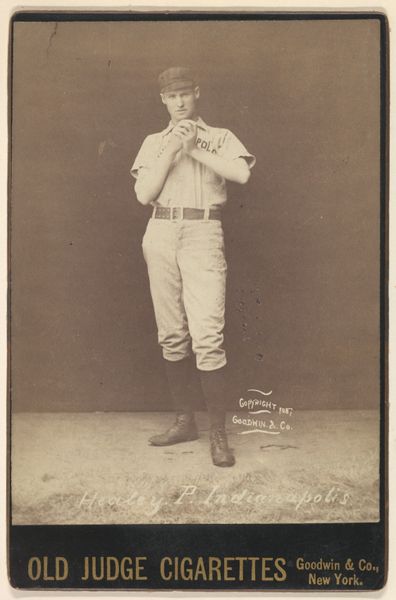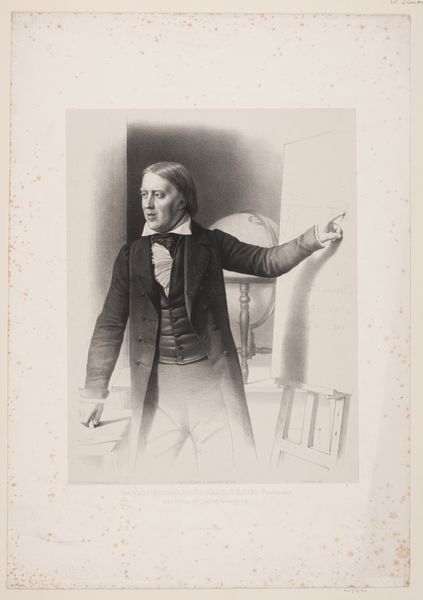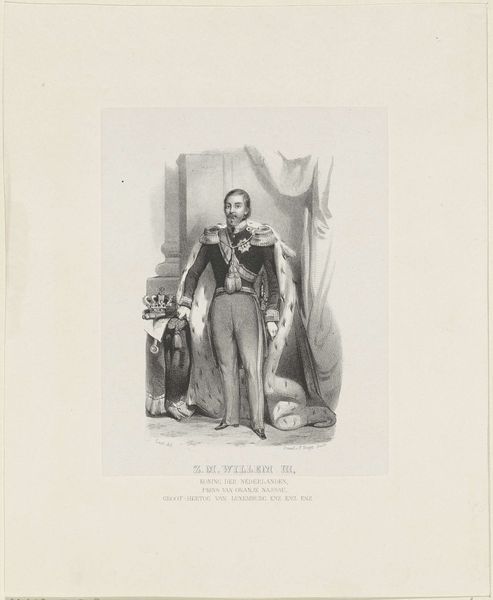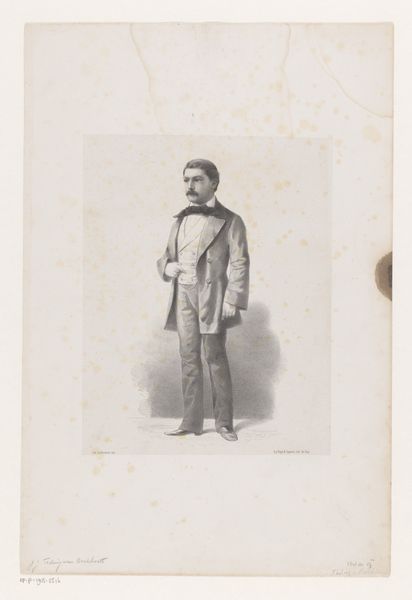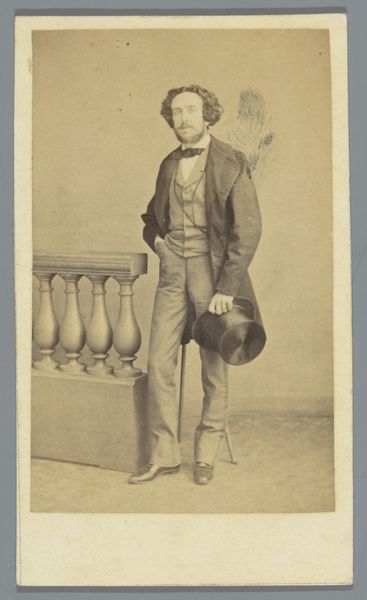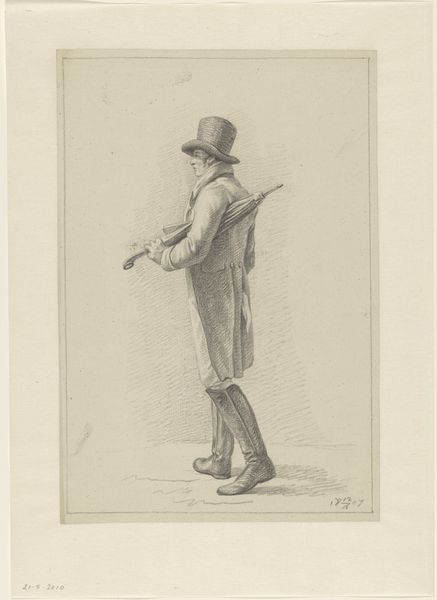
print, paper, engraving
#
portrait
#
aged paper
# print
#
paper
#
romanticism
#
france
#
watercolour illustration
#
musical-instrument
#
academic-art
#
engraving
Dimensions: Lithographs: H. 10-1/2 in., W. 8-1/4 in. With matte: H. 16 in., W. 13 in.
Copyright: Public Domain
Editor: Here we have Alexandre Désiré Collette's "Lithographic Plates," created in 1850. It’s a print on paper. The stark contrast and the detail in the man's clothing and the instrument really jump out. What do you see in this piece from a formalist perspective? Curator: The print's formal elements present a clear hierarchy. Observe how the artist positions the musician centrally, and consider how the curvature of the French horn interacts with the lines of the body. Are you drawn to a certain pattern in how light and shadow fall? Editor: Yes, the light emphasizes the polished areas of the horn, creating contrast with the muted tones in the paper and suit. It also guides your eyes upward, highlighting the musician’s face and the focused expression. Is that a deliberate focal point of the composition? Curator: Precisely. The strategic use of chiaroscuro directs our gaze. Note also how the artist meticulously renders texture – the smoothness of the instrument versus the patterned fabric of his trousers, even the paper itself is aged. Do you think this contrast contributes to the artwork’s meaning? Editor: I hadn't considered it, but the juxtaposition does create a rich visual texture, enhancing the depth and complexity of the image, making it more engaging than a simple portrait. So by concentrating on form and structure, you find much more than you might initially perceive. Curator: Indeed. It's about deconstructing the artwork to see how each element functions within the larger whole, revealing a layered, compelling narrative in a static form. This approach offers a route for more understanding, perhaps, of how artwork gains its impact.
Comments
No comments
Be the first to comment and join the conversation on the ultimate creative platform.
